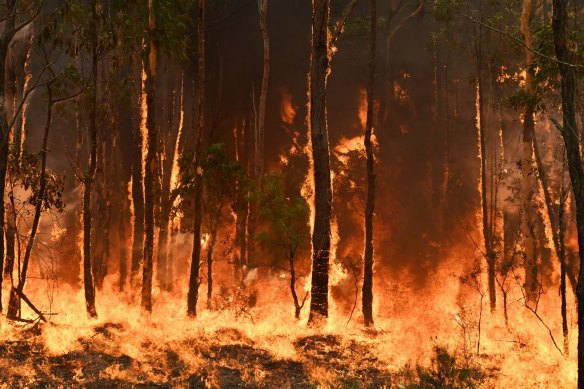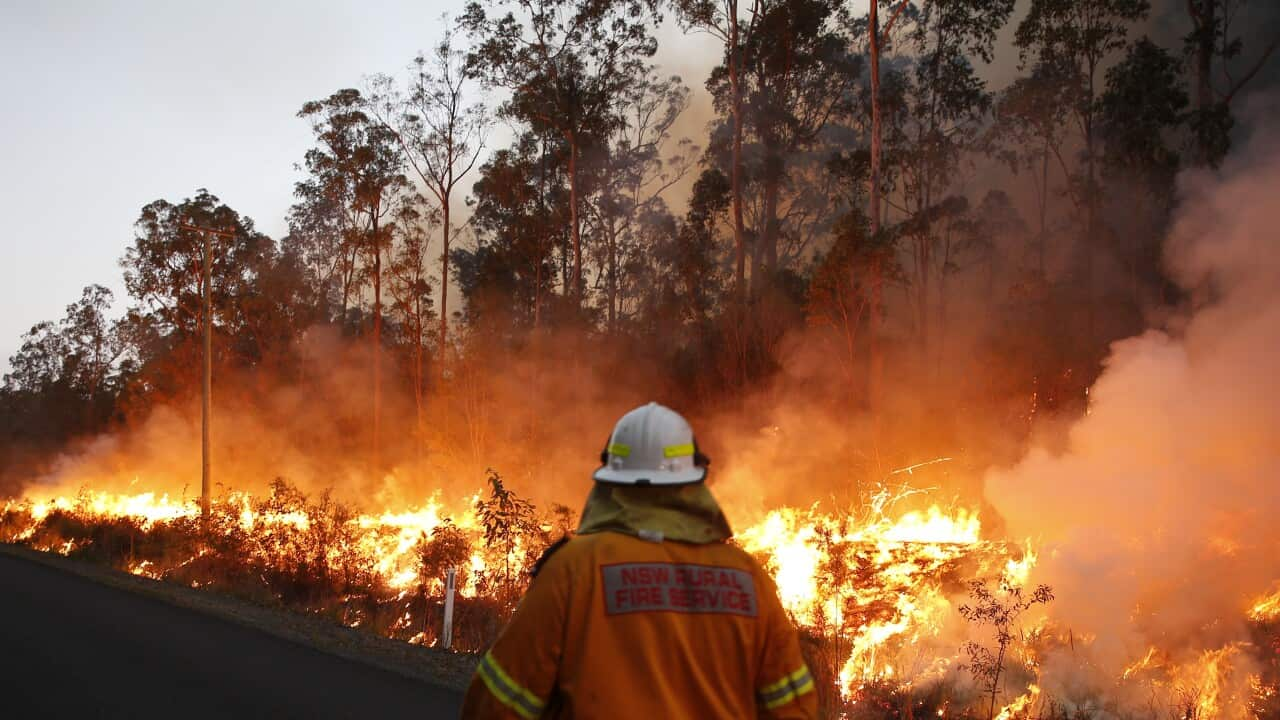Crafting Your Residential property's Safety and security: A Detailed Bushfire Management Plan Overview
Crafting Your Residential property's Safety and security: A Detailed Bushfire Management Plan Overview
Blog Article
The Importance of Bushfire Monitoring in Fire Security
In the world of fire protection, the relevance of reliable bushfire monitoring can not be underrated. As communities around the world grapple with raising circumstances of wildfires, the proactive strategy to stop and alleviating these natural catastrophes through tactical bushfire administration strategies has actually emerged as a vital element. Past the instant danger to human life and property, the interaction in between bushfire monitoring and ecological preservation, area participation, and environment change positions complex challenges that need comprehensive solutions.
Significance of Proactive Bushfire Avoidance
Aggressive bushfire avoidance strategies are essential in reducing the devastating effects of wildfires on areas and ecological communities. By taking preventative measures prior to a bushfire takes place, the dangers related to these natural disasters can be substantially decreased. One key element of positive bushfire avoidance is gas administration. This entails minimizing the amount of flammable product, such as dead plant life and completely dry leaves, that can work as fuel for fires. Fuel management methods include suggested burns, where regulated fires are deliberately lit to minimize the build-up of combustible product.
Informing the public on fire safety techniques and advertising area understanding regarding the importance of bushfire avoidance are vital components of proactive strategies. Eventually, positive bushfire prevention plays a significant function in securing areas and ecological communities from the devastating effects of wildfires.
Function of Neighborhood Interaction in Fire Security
Involving the area in fire protection initiatives is important to boosting the efficiency of positive bushfire avoidance strategies. Neighborhood interaction plays an essential duty in cultivating a collective understanding of the threats postured by bushfires and the value of readiness actions. By entailing local citizens, authorities can disseminate important info ablaze security techniques, evacuation procedures, and very early caution systems, equipping individuals to take aggressive actions to safeguard their residential properties and lives.
By promoting a society of readiness and partnership, areas can enhance their capacity to react successfully to bushfire emergencies, reducing the influence on lives and buildings. Ultimately, neighborhood interaction is a cornerstone of comprehensive fire defense strategies, stressing the significance of collective activity in safeguarding at risk locations from the threat of bushfires.
Significance of Wild Animals Preservation in Bushfire Management
Conservation of wildlife plays a critical duty in efficient bushfire monitoring strategies, making certain the defense of varied ecosystems and biodiversity in fire-prone areas. Wildlife conservation is vital as it adds to the overall resilience of communities, helping in their ability to recoup and withstand from the impact of bushfires. By saving habitats and safeguarding different varieties, the all-natural equilibrium within these ecosystems is preserved, which is crucial for their long-lasting health and wellness and sustainability.
In addition, wild animals conservation likewise assists in minimizing the danger and intensity of bushfires. Healthy and balanced ecological communities with unspoiled wildlife populations can function as natural firebreaks, slowing down the spread of fires and limiting their damaging potential (Bushfire Management Plan). Certain animal varieties, like burrowing animals or birds that spread out seeds, play distinct roles in assisting or preventing fires in the post-fire regrowth of environments
Integrating wild animals preservation right into bushfire monitoring approaches is not just important for securing biodiversity yet also for advertising the overall wellness and durability of communities despite enhancing fire threats.
Benefits of Strategic Gas Reduction Programs
Tactically executing look at this website fuel reduction programs is essential in mitigating the threat and effect of bushfires in fire-prone regions. These programs involve controlled burning, mechanical clearing up, and various other techniques to decrease the amount of flammable greenery available to sustain wildfires. By tactically reducing gas loads in key areas, such as near household neighborhoods or crucial facilities, the strength and spread of bushfires can be considerably reduced.
One of the primary advantages of gas decrease programs is the enhancement of total fire resilience in an ecological community. By creating calculated fuel breaks and minimizing the connection of greenery, these programs help to disrupt the path of a bushfire, making it much easier for firefighters to snuff out the blaze and have. Additionally, gas reduction programs can shield biodiversity by protecting against excessively extreme fires that can ruin habitats and endanger wildlife populaces.
Furthermore, these programs can additionally protect human lives and residential property by decreasing the risk of tragic fires that present a substantial risk to neighborhoods. Ultimately, calculated fuel decrease programs play a vital duty in proactive bushfire administration and fostering a safer atmosphere for both people and nature.
Effect of Climate Modification on Bushfire Risk

Greater temperatures cause drier greenery, making it a lot more prone to ignition. Minimized rainfall in certain regions prolongs dry spell conditions, additionally boosting the flammability of the landscape. Additionally, the altering climate has actually changed wind patterns and climatic conditions, causing even more unpredictable fire behavior and fast fire spread.
As the environment remains to change, the frequency and strength of bushfires are expected to rise, requiring a adaptive and positive strategy he has a good point to bushfire management. Approaches need to develop to make up the altering danger landscape, integrating climate estimates and taking into consideration lasting durability in fire monitoring planning. Attending to the impact of climate change on bushfire risk is crucial in creating reliable techniques to secure lives, property, and the atmosphere.
Final Thought
Finally, positive bushfire prevention, community involvement, wild animals preservation, calculated fuel decrease programs, and factor to consider of environment adjustment are crucial components in effective fire security. By executing these techniques, we can much better handle bushfire risks and safeguard both human lives and the setting. Bushfire Management Plan. It is critical that stakeholders interact to focus on these actions to minimize the devastating impact of bushfires on communities and environments

As the environment continues to transform, the frequency and strength of bushfires are expected to increase, necessitating a positive and flexible method to bushfire administration.In verdict, aggressive bushfire prevention, area engagement, wild animals preservation, critical gas decrease programs, and factor to consider of climate adjustment are critical elements in effective fire protection.
Report this page